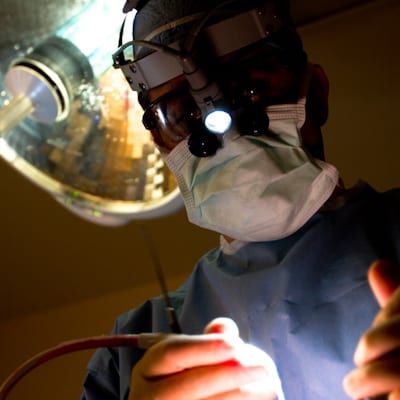
Why I Became a Doctor
No one in my family is a physician. Growing up, my parents held physicians in high regard. Both for their academic achievement as well as their dedication to helping others. As a child, I suffered from allergies, migraines, and vertigo so I was quite familiar with the doctor’s office. Originally, I wanted to be a carpenter. I spent a lot of time helping my dad with woodworking and remodeling projects and was quite skilled with my hands. But I showed an aptitude for science that wouldn’t be used as a carpenter. When I was 13, my dad had an unfortunate accident and sustained facial trauma that changed my life’s path. A surgeon was called in on a Sunday evening as my father’s life hung in the balance. That surgeon’s skill saved my father and planted the seed that would grow into my life’s work. As he did, I wanted to be able to use my intelligence, compassion, and even manual dexterity to make a difference in the lives of others. For me, there could be no other career with greater rewards than medicine. For a young boy who nearly lost his beloved father, my profession provides me daily with the chance to pay it forward.
The Craft of Surgery
There are many kinds of workers who use the title carpenter. Some are laborers who apply their skills to create rather ordinary things. Think of those neighborhoods full of rows of houses that look virtually identical. In this case, the builder learned to create a simple structure and do it over and over again. An inside look may reveal that the houses are adequate, adhering to recognized codes and standards but lack creative thought and dedication to detail. I did not want to be this type of carpenter. Some carpenters are true builders that use their creativity to produce unique and valuable homes. Each one is different from the next and each reflects aspects of the builder and the family the home is created for. Surgery is a lot like this. There are some surgeons who apply the same techniques day after day and produce reliable results. They stick to a limited number of techniques and simply repeat what they’ve been taught. They often brag of caseloads and compile volume as evidence of quality. But just like the rows of identical houses, there may be something lacking in the redundancy of their craft.

My dream was to become skilled artisan who is capable of producing hand crafted works of art. Each piece reflecting the summation of experience and constant dedication to improving my craft. I prefer to keep improving my skills with a broad range of problems and challenges that emphasizes quality over quantity. I continually evaluate my technique and enjoy the challenges of surgical problem solving. The thyroidectomy that I performed years ago seems simplistic and unrefined compared to the thyroid operations that I do today. The surgical scar is one example. My technique has evolved so that scarring is minimized- many of my patients’ friends and family can’t tell that they even had surgery, just months after the operation. Today, I’m also providing scarless thyroid surgery – an option for people who scar badly, keloid, or who just want the best possible cosmetic outcome. This new surgery, first developed in Thailand and South Korea, is being offered at such places at Johns Hopkins, University of Chicago, UCLA, Baylor, and here! This innovative approach requires an enormous amount of expertise with the traditional thyroidectomy as well as an intimate knowledge of anatomy, with all its possible variations, that can only come from extensive experience.
